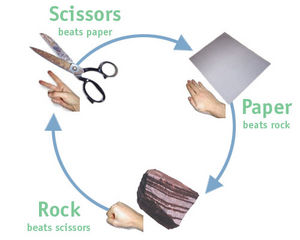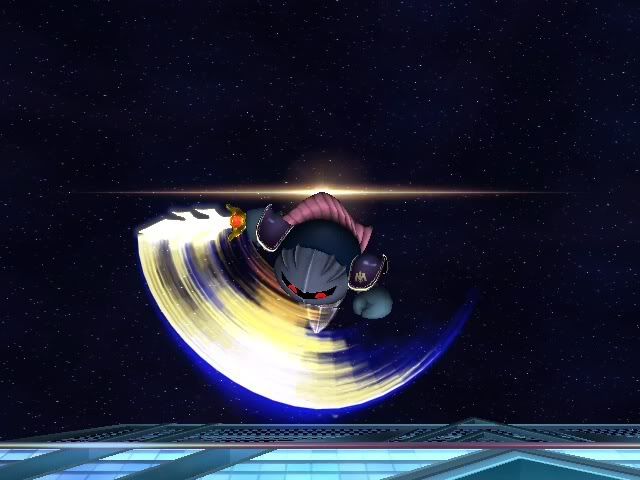Essentially, every confrontation or conflict in every fighting game in existence is a game of rock-paper-scissors. Both players have different options (different attacks, blocking, dodging, etc...) and those options counter other options.
There are obviously quite a few differences between fighting games and rock-paper-scissors, though. There are a few reasons for that:
• All of the "throws" are weighted. In other words, different options have different advantages and disadvantages. This is analogous to if you were playing a Best of 3 set of RPS games, where winning with "Scissors" caused you to automatically win the entire Bo3 set.
• There are MANY of these situations that occur during a single game, thousands, even, instead of a low amount like in an RPS set.
• There are a vastly larger number of options than the traditional rock, paper and scissors. Every action that a character can perform is an option that is a part of the RPS scenario.
On a seemingly unrelated topic, many moves in fighting games are considered to be "safe", even when they whiff and your opponent is
within your "zone". The easiest way to explain how safe a move is is via the 'Multiple RPS' concept.
If an action protects the player in some way while it is being performed (with a decently sized hit-box, invincibility, etc...), has very short ending lag and the character performing it has an attack with comes out quickly, the first move can create a 'Double RPS' situation. What I mean by this is that the opponent will, in most cases, be unable to punish the first move due to the aforementioned traits, which allows the first player to perform a second move that the opponent will ALSO have to play RPS with before being able to punish the first player.
To provide a Brawl example, think of Meta Knight spacing and camping with his Down Air. For most characters, punishing the dair will require either a hard read, a well placed hitbox or a power-shield. If a player cannot pull off one of those options and attempts to punish normally, they will have to prepare for another Dair, Shuttle Loop, Ftilt, Dtilt or Uair (if they come from above). This means that they have to play RPS twice, once to avoid the dair while still getting in Meta Knight's zone and then a second time to avoid his follow-up.
The majority of characters can pull this off, even many low tiers (spacing in this fashion via bair is a large part of Jigglypuff's gameplay, for example). The only character who cannot pull a 'double RPS' off in viable situations is Ganondorf due to his very slow, punishable attacks.
It's worth noting that the number of RPS situations an action can produce is not static and depends on how close the opponent is and the match-up. For example, a character like Falco can create LOTS of simultaneous RPS situations on Final Destination by firing SHDL at a Ganondorf on the opposite side of the stage.
Which brings me to my final point, one of the main reasons with Meta Knight is so good is that he can create these 'double RPS' situations FAR more frequently than any other character with his Ftilt, Dtilt, Uair, Dair, Grab, Shuttle Loop, Fsmash and Dsmash. His Ftilt and Shuttle Loop can lead to large numbers of RPS games, which can make them ridiculously difficult to punish for many characters.
This is such a powerful trait of Meta Knight that the characters who are said to only lose -1 (slight disadvantage) against Meta Knight mainly do so well because they are good enough at punishing to keep MK's RPS creation ability down to the level of a standard character. Diddy Kong's bananas, Fox's speed, Falco's laser frame traps and DACUS, Marth's Dolphin Slash, etc...
Understanding this RPS element of Meta Knight's game is key to seeing exactly what it is that makes him so safe, and determining how that affects the metagame as a whole.





